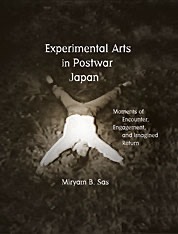 Arguably the period of current greatest interest in Japanese film studies is the 1960s. Many scholars, young and old, are working on the period, especially if you expand it to include the late 1950s and the early 1970s. It was of course the time of the first "modernists" such as Masumura Yasuzo and Nakahira Ko; the beginnings of experimental cinema; the Japanese New Wave of Oshima, Imamura, Yoshida, et al.; a political pink cinema; the breakdown of the studio system; the rise of a new documentary; and the flourishing of independent film. An exciting period with much to research.
Arguably the period of current greatest interest in Japanese film studies is the 1960s. Many scholars, young and old, are working on the period, especially if you expand it to include the late 1950s and the early 1970s. It was of course the time of the first "modernists" such as Masumura Yasuzo and Nakahira Ko; the beginnings of experimental cinema; the Japanese New Wave of Oshima, Imamura, Yoshida, et al.; a political pink cinema; the breakdown of the studio system; the rise of a new documentary; and the flourishing of independent film. An exciting period with much to research.
David Desser's Eros Plus Massacre - already over 20 years old! - is still a very useful introduction to the period. But it is testimony to the richness of the time that there is so much that Desser does not deal with. Much attention has been given to the theoretical context in these years (Yuriko Furuhata's dissertation, etc.) and to more marginal genres like documentary (Markus Nornes's work on Ogawa), pink film (Jasper Sharp's book and an upcoming anthology), and experimental cinema (including recent ATG retrospectives and attention to Matsumoto Toshio).
Miryam Sas's new book, Experimental Arts in Postwar Japan: Moments of Encounter, Engagement, and Imagined Return, is a welcome addition to this proliferation of research, focusing not just on experimental cinema, but its larger milieu of the experimental arts, especially post-shingeki theater, butoh dance, and photography. The section on Terayama Shuji is a nice compliment to Steve Ridgely's new book on that poet, playwright, and filmmaker.
All very exciting, but as I advise my grad students, there are also many other rich periods of Japanese cinema to study. I look forward to seeing more of such work as well.

